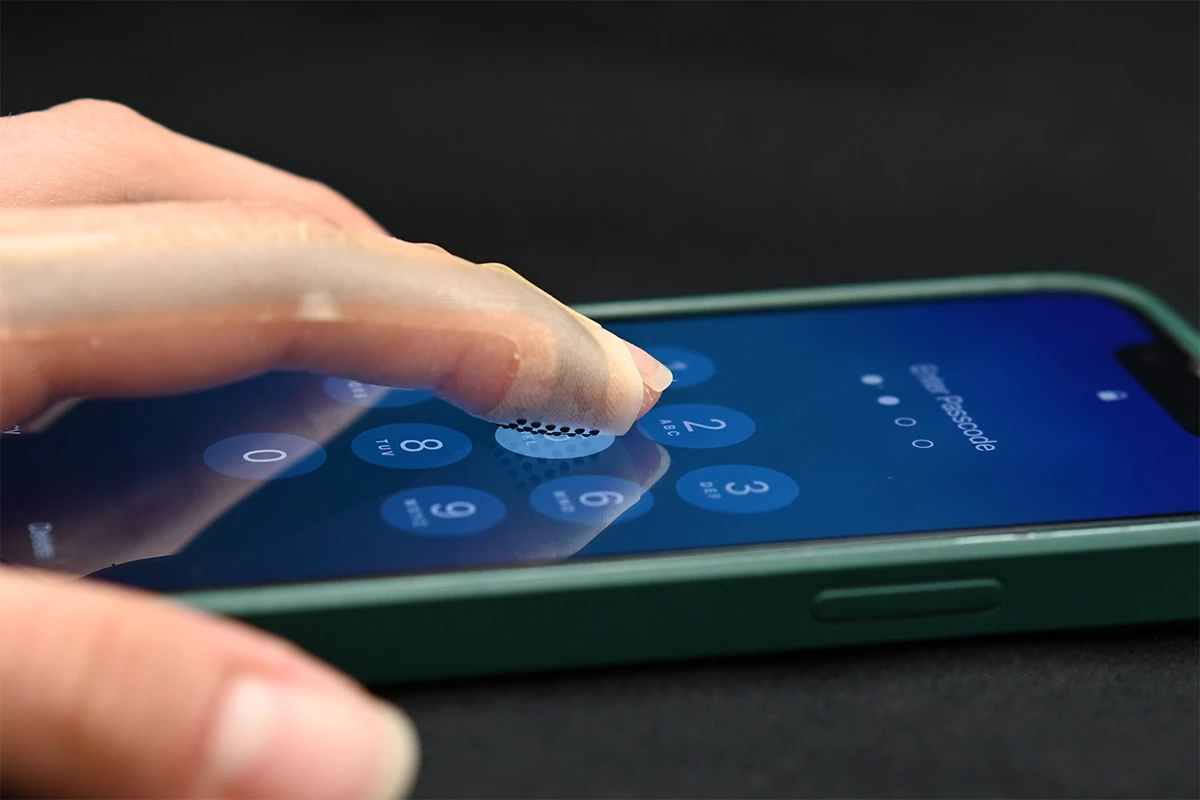Engineers from Northwestern University have developed a flexible device you can wear on your fingertip like a Band-Aid to feel the sensation of interacting with textured and patterned surfaces on a touchscreen. It could be a major step forward in how we interact with personal technology.
"Touch is the last major sense without a true digital interface," said PhD student Sylvia Tan, who led the study on this tech that appeared in Science Advances yesterday. "We have technologies that make things look and sound real. Now, we want to make textures and tactile sensations feel real. Our device is moving the field toward that goal."
The flexible film-like haptic wearable, which wraps around your finger and features little nodes on the outside, is called VoxeLite. It could enable blind people to better interact with touch-based devices, augment interactions in AR and VR experiences, and enhance human-machine communication. It could enable responsive touch controls for car dashboards, simulated textures for products in online stores on your phone, tactile navigation cues for people with vision impairment, more realistic feedback in mobile games, and immersive content that you can interact with at museums.

So how does this wearable work? It's essentially a thin, stretchy sheet of latex with several rubber 'nodes' that cover your fingertip and can press into your skin precisely, individually, and at high speed. Each of these nodes has a conductive outer layer and an electrode hidden inside. "When swiped across an electrically grounded surface, the device controls the friction on each node, leading to controllable indentation on the skin,” explained haptics researcher J. Edward Colgate.
What's happening there is the conductive inner layer is interfacing with the surface and generating electrostatic forces, which cause the nodes to push against the skin.
Modulating the voltage applied to the nodes allows VoxeLite to deliver a range of friction to simulate the feeling of coming in contact with rough or slippery surfaces. And since it's got several nodes placed just over 1 mm apart, it can precisely produce tactile cues to match human acuity, meaning the simulated sensations will feel as real as when you touch physical objects.

The team tested VoxeLite by having study participants wear the device, and ran experiments to see if they could accurately recognize virtual textures, patterns and directional cues (like up, down, and clockwise motions). People wearing VoxeLite identified those directions patterns with up to 87% accuracy.
That's a great starting point for developing next-generation haptic technologies. The researchers need to further explore scaling VoxeLite to cover multiple fingertips, look at ways to build a wireless version that you could wear more naturally, and see how the device holds up over extended use.
They also intend to look at personalized calibration for more realistic sensations tuned to each user; I imagine the project could eventually require collaboration with consumer hardware manufacturers and software developers to find ways to incorporate haptics into mobile devices, and into games and apps for those devices.
If you're into advances in haptics tech, you'll also want to check out this handheld device designed to help people with vision impairments follow sports games, and these fingertip 'gloves' that are designed to give you a more vivid sense of touch in VR experiences.
Source: Northwestern University




